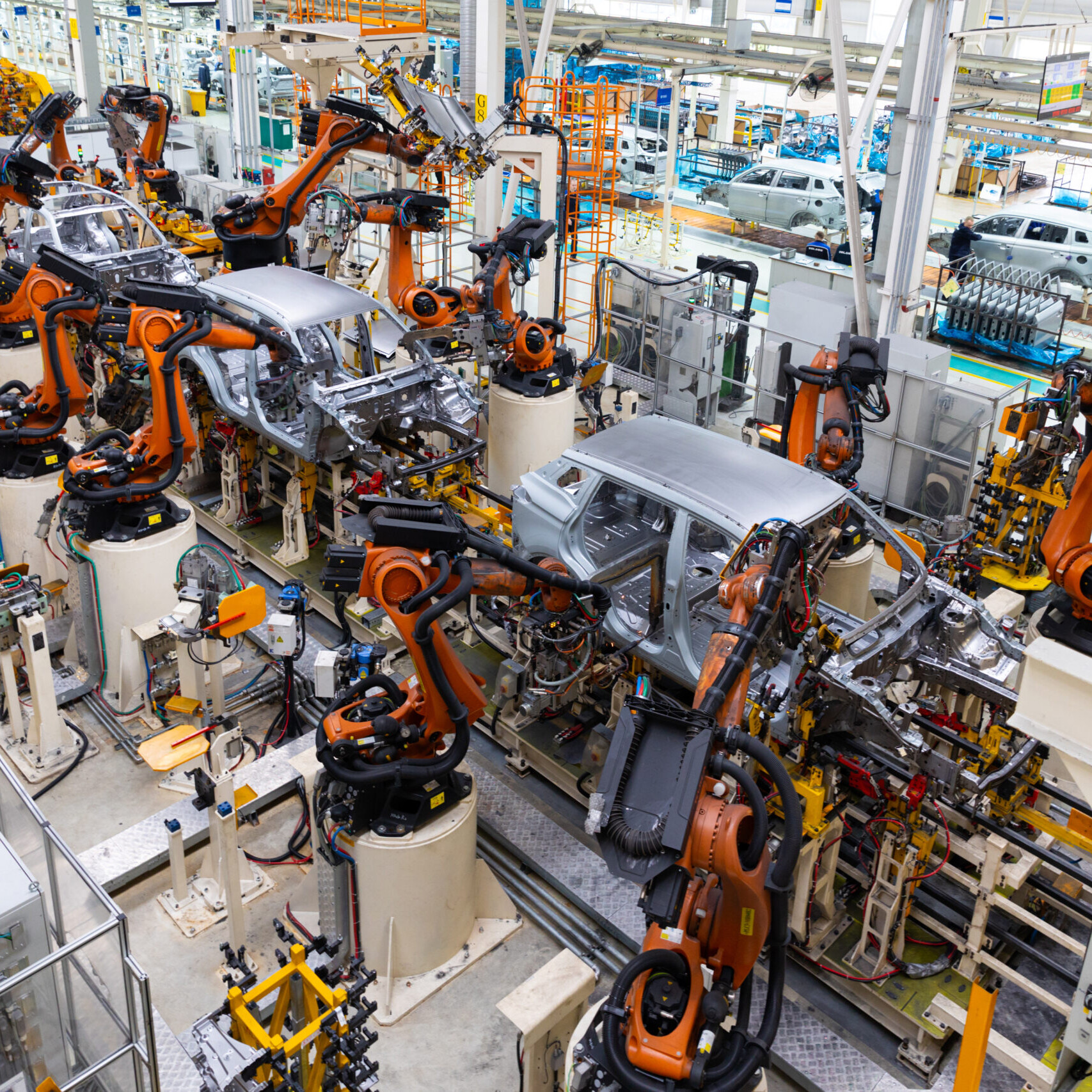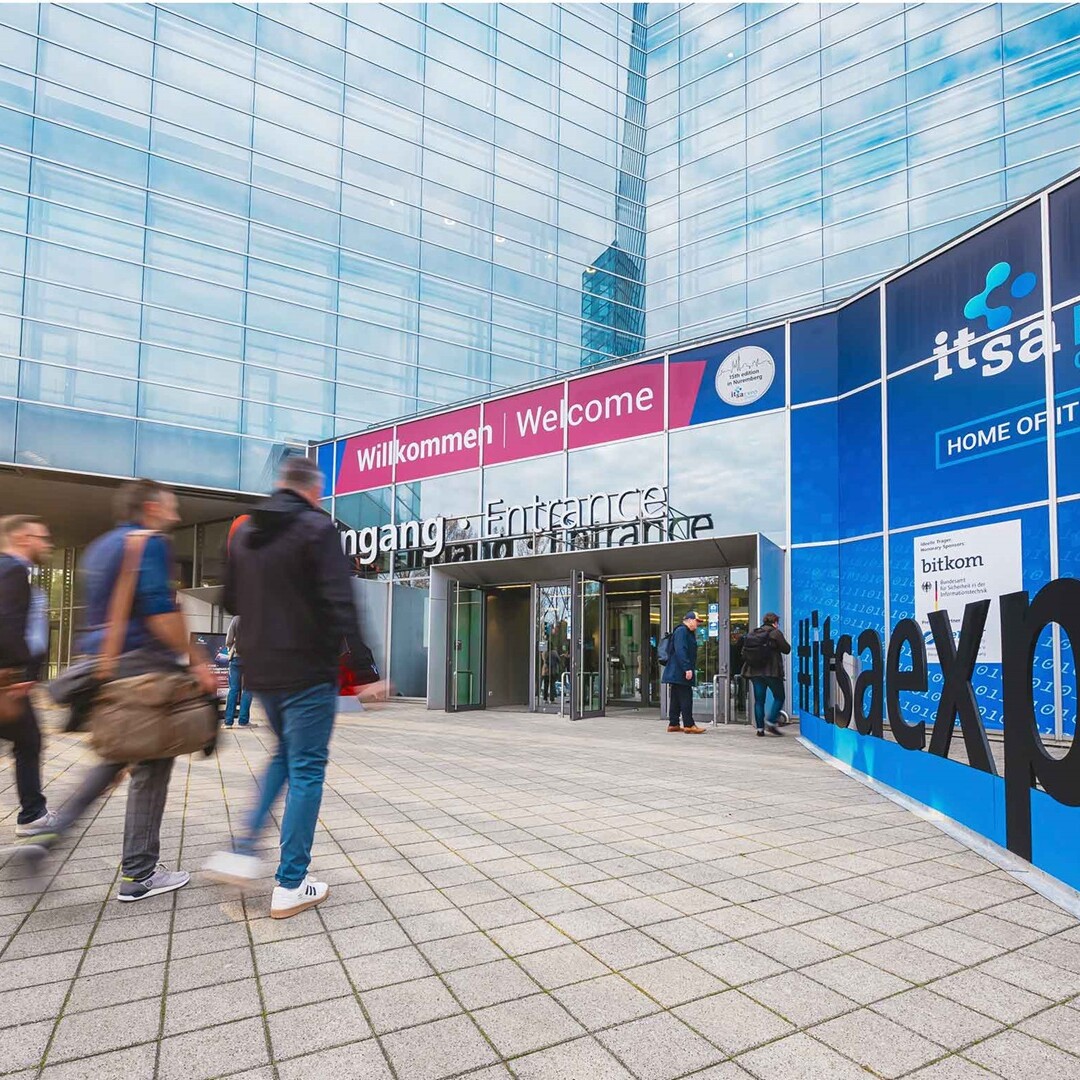SSDs and ultra-fast NVMe modules have long been the talk of the town — so much so that one might easily assume the classic HDD is a relic of the past. But anyone who believes the Hard Disk Drive is on the verge of extinction has likely only heard half the story. And then, out of nowhere, along comes MACH.2. This technology propels mechanical hard drives into entirely new performance spheres — without sacrificing their familiar price advantage. Sounds exciting? It certainly is!
The evolution of data storage
A few years ago, traditional HDDs (Hard Disk Drives) dominated almost every server room. Today, they face strong competition from SSDs (Solid State Drives) and NVMe (Non-Volatile Memory Express), while innovations like MACH.2 (Multi-Actuator Hard Drives) breathe new life into HDD technology.
But what exactly sets them apart?
An HDD is like a giant warehouse with countless shelves — plenty of storage space, but slower access times. An SSD is more like a high-bay warehouse equipped with robots, delivering the requested items at lightning speed. NVMe, on the other hand, is comparable to a high-speed conveyor system that can handle multiple orders at once. And MACH.2? Imagine your warehouse suddenly has two conveyor belts instead of just one — double the speed, yet still the cost of a single warehouse or conveyor system.
What is an HDD and why is it still important despite the ‘Flash Hype’?
The Hard Disk Drive (HDD) has been synonymous with mass storage since the 1950s. Unlike an SSD, the HDD relies on spinning magnetic disks, known as platters, which rotate at high speeds — typically between 5,400 and 15,000 revolutions per minute. A movable read/write head (known as an actuator) races across the platters, magnetising tiny areas to write or read individual bits. The technology is remarkably similar to a record player: the rotating platter plays the role of the vinyl, while the actuator arm and head function like the needle — reading and writing data along spiral tracks.
This mechanical principle comes with both advantages and disadvantages. On the one hand, HDDs can store vast amounts of data at a relatively low cost. On the other hand, the mechanical design means that data access takes more time, as the read/write head must first locate the correct position. HDDs also generate noise and heat, and are more vulnerable to damage from physical shocks.
Modern HDDs typically achieve sequential transfer rates of 150 to 270 MB/s — pushing beyond that is nearly impossible, as the limits are defined by physics. However, today’s HDDs offer enormous storage capacities, ranging from 2 to 24 terabytes of raw capacity per drive.
What is an SSD and when does it make sense to use one?
Unlike hard disk drives, SSDs (Solid State Drives) use flash memory chips (NAND) to store data electronically. Because there are no mechanical components like read/write heads that need to move into position, SSDs eliminate waiting times caused by physical access, resulting in dramatically lower latencies. Since the mid-2000s, SSDs have increasingly complemented or even replaced HDDs in many areas. Inside an SSD, numerous memory cells are integrated onto chips, storing data in electrical form. Like HDDs, SSDs are non-volatile, meaning the data remains intact even when the device is powered off. An SSD’s data transfer speed is largely determined by its interface: early SSDs often used the same SATA connection as HDDs, typically reaching read and write speeds of around 550 MB/s — already twice as fast as the best-performing HDDs.
However, the real strength of SSDs lies in their IOPS (Input/Output Operations Per Second). While an HDD might manage 100 to 200 IOPS, SSDs can easily achieve between 50,000 and 100,000 IOPS, making them ideal for data-intensive workloads and applications.
That said, these advantages come at the cost of a higher price per gigabyte compared to HDDs, and — depending on the usage scenario — a limited lifespan due to wear on the flash cells (measured in write cycles). Depending on the type, modern SSDs typically offer between 1,000 and 100,000 write cycles per cell. Thanks to advanced controllers with wear-levelling algorithms, this “wear and tear” is rarely an issue in everyday use, and modern SSDs often last well beyond five to ten years under normal conditions.
What is NVMe — and who needs it?
Strictly speaking, NVMe (Non-Volatile Memory Express) isn’t a type of storage drive, but rather a protocol and interface designed specifically for high-speed flash storage. The background: early SSDs often used SATA or SAS interfaces — both of which were originally developed for slower hard disk drives. As a result, these interfaces quickly became a bottleneck for the far faster SSDs.
NVMe eliminates this limitation by connecting SSDs directly via the PCIe (Peripheral Component Interconnect Express) lanes of the motherboard. While conventional SATA SSDs are capped at around 550 MB/s, NVMe SSDs can achieve speeds of 7,000 MB/s or more over PCIe. In most cases, an NVMe SSD is a PCIe-based SSD, often in the compact M.2 card format, that uses the NVMe protocol for communication.
Another key advantage of NVMe is the ability to process far more simultaneous commands (queue depth) compared to SATA. In practice, this translates to higher data throughput and extremely low latencies. NVMe is therefore the perfect fit for performance-driven applications. One important distinction to remember: every NVMe drive is an SSD, but not every SSD is NVMe. If you’re aiming for maximum speed, NVMe is the current gold standard in non-volatile storage solutions.
What is MACH.2? When HDDs go turbo
A few years ago, hardly anyone would have expected traditional hard drives to ever come close to SSD-like speeds. But that’s exactly what Seagate’s MACH.2 technology has achieved. Thanks to two independent actuators (read/write heads), MACH.2 drives deliver nearly double the IOPS and significantly increased data throughput. All of a sudden, HDDs are performing in areas once thought exclusive to flash storage — all without giving up their typical cost advantage.
However, to fully unlock the potential of these dual-actuator HDDs, the storage environment must be properly designed. Specially adapted backplanes — as found in RNT’s BigFoot storage systems — ensure there are no bottlenecks in connectivity, allowing for solutions that combine SSD-like performance with the capacity and cost benefits of a traditional hard drive.
A real-world example: one of Germany’s leading cloud TV providers relies on MACH.2 hard drives to handle millions of parallel recordings without hitting performance limits — saving a considerable amount compared to flash-only systems. MACH.2 is clear proof that mechanical hard drives are far from obsolete. With the right technology and system integration, they can transform into true data powerhouses.
Use cases: When does each storage solution make sense?
Anyone building a storage infrastructure today will quickly face the question of which medium is the right choice for which scenario. The answer is rarely “either/or” — much more often, it’s “a combination of all of them,” depending on the type and volume of data as well as the available budget.
HDD: Cost-effective capacity giant for archive and backup
- Long-term archiving of rarely accessed data (e.g. tax documents, medical imaging data)
- Backup systems and warm data for long-term retention of occasionally used files
- Video footage in surveillance systems (continuous write loads at an affordable cost)
SSD (SATA/SAS): Fast access for critical applications
- Databases, ERP, and BI workloads with frequent read/write accesses
- Virtualisation (e.g. fast provisioning of virtual machines)
- Office and multimedia applications that benefit from quick loading times
NVMe: Maximum performance via PCIe connection
- Real-time data analysis (e.g. stock trading, AI workloads, machine learning)
- High-performance computing (scientific simulations, genomics research)
- Media production (4K/8K video editing, rendering large files)
MACH.2: When HDDs join the SSD league
- Cloud TV and streaming services (high data rates, numerous parallel accesses)
- Big data workloads, where both capacity and performance are equally required
- Backup and archive systems with an added performance boost
Hybrid Solutions: The best of both worlds
Many companies adopt a tiered approach. SSDs or NVMe provide performance, while HDDs – possibly with MACH.2 – deliver volume. This results in flexible storage architectures, where “hot” data is placed on fast media, “warm” data is stored cost-effectively, and “cold” data is archived, for example, on tape. Depending on how cost- and performance-critical the system is, it can be fine-tuned.
- SMEs: Small all-flash or NVMe cache units, complemented by modern HDD-based object storage
- Tiered storage in data centres: Automatic migration of infrequently accessed data to HDD layers or tape
- Service providers: MACH.2 for high-performance mass storage, NVMe for latency-sensitive applications
How RNT helps find the right mix
When it comes to complex storage architectures, the question arises: who builds and maintains the entire system? And how can bottlenecks be avoided that could slow down MACH.2 HDDs or NVMe SSDs? This is where RNT steps in. With two product families, we cater to the different needs:
BigFoot®: The pure hardware platform for large capacity
BigFoot® is primarily a hardware platform designed for HDDs but can also include SSD slots for caching or specific requirements, depending on the model and configuration. At its core, however, BigFoot® is focused on accommodating as many traditional hard drives (HDDs) as possible in a compact space, allowing you to store large volumes of data efficiently and cost-effectively.
- Typical Use Case: Archiving, backup, or cloud storage with many terabytes (or even petabytes) of data, where capacity is more important than maximum speed.
- MACH.2 Support: BigFoot® chassis are designed to allow you to install dual-actuator HDDs (MACH.2) without throughput bottlenecks. This significantly improves the performance of traditional hard drives.
- Optional SSD Integration: Some BigFoot® models also allow the integration of SSDs, for example, for caching functions. However, the primary focus is on the HDD mass storage concept.
In Summary: BigFoot® is not a purely “HDD-only” box but is best configured with large hard drives.
Ridel Kougoum, Senior IT-Systems Engineer at RNT and expert in Hybrid Cloud and Veeam Backup Solutions
Yowie® Hybrid Cloud Storage: The Complete Solution of Hardware, Software, and Support
Yowie® goes beyond mere hardware, combining pre-installed object storage software (e.g., Cloudian HyperStore) with the appropriate server infrastructure. The focus is on easy management, 100% S3 compatibility, and seamless scalability. Whether HDD, SSD, or NVMe – Yowie® adapts flexibly to your workloads and also offers extensive security features such as Object Lock for immutable storage (WORM).
- Typical Use Case: Enterprise-wide data management, where a ready-made “Storage as a Service” solution is sought without the hassle of complex integration of hardware and software.
- Scalability: Start with just 2 terabytes and grow to hundreds or even thousands of terabytes as needed, without the need to fundamentally rebuild the system. Our smallest Yowie Immutable Storage Appliance is available as a complete solution with modern object storage (Cloudian HyperStore) and Object Lock – and there are no limits on scaling upwards.
- Flexibility: Depending on your requirements, you can equip Yowie® with flash or hard drives and easily add more nodes when needed. This allows performance and capacity to be precisely aligned with your needs and the growth of your valuable data.
In short: Yowie® takes care of most of the storage architecture for you – you get a complete S3 solution as an appliance or Data Platform Nodes, which you simply need to integrate into your network to start right away. And this is made easy thanks to the integrated and exclusive Yowie Installation Wizard. For your archive data, you can now also write directly from S3 to Yowie Deep Archive. This ensures you can effortlessly meet all data sovereignty and data protection requirements at any time, cost-effectively. The entire S3 stack of Yowie Hybrid Cloud Storage is Made in Germany.
Vincent Van der Linden, Regional Sales Manager at RNT and Expert in Storage Systems and Solutions
Conclusion: The right mix makes the difference
HDD, SSD, and NVMe are not opposites, but rather building blocks of an intelligent storage strategy. HDDs excel in capacity and cost, while SSDs and NVMe shine where fast access and minimal latency are required. With MACH.2, even traditional hard drives have significantly improved, making them suddenly viable for applications typically reserved for flash storage. Relying on just one technology risks either excessive costs or insufficient performance.
The future lies in a tiered solution: “Hot” data goes on NVMe or SSD, “warm” data on HDD—optionally turbocharged with MACH.2. Solutions like the BigFoot® series for hard drive storage or the Yowie® Data Platform for flash and object storage give you the freedom to find the perfect balance of capacity, speed, and cost. This way, you remain flexible, future-proof, and save money in the long run.

Patricia Hillebrand
Technical Alliances Manager , RNT Rausch GmbH
Know-how about digitalisation, servers and storage

NIS2 made easy: Immutable storage contributes to compliance
The new NIS2 Directive presents companies with the challenge of enhancing their cybersecurity measures and ensuring data integrity. With immutable storage, businesses can ensure that critical data is permanently protected and cannot be altered. This technology not only provides increased security but also meets the stringent requirements of NIS2.
Discover how immutable storage can help your company comply with the directive while safeguarding your sensitive information.
The grand opening of the Mariposa Mountain School or how to disrupt poverty
When you’re searching for recommended places in the Dominican Republic, Los…
Edge Computing for the SMB/SME – sense or nonsense?
There are good reasons for moving workloads to the edge: real-time applications…
RNT and Co-mind launch Yeren Local AI
RNT Rausch and Co-mind unveil Yeren® Local AI – a compact, European-made…
Custom IT solutions for future-proof IT infrastructure
A one-size-fits-all approach simply doesn’t work when organizations have…
CloudFest 2025
17th-20th March 2025 CloudFest is one of the leading conferences in the world…
it-sa 2025: For better IT security
7th–9th October 2025 Experience Yowie Hybrid Cloud Storage live and discover…








